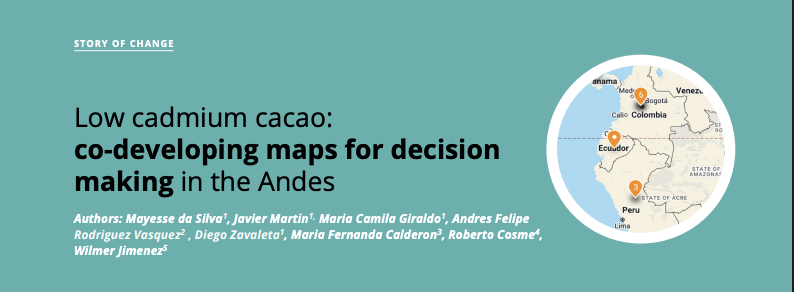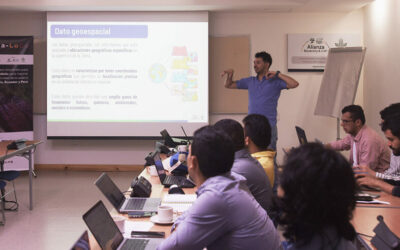Soil & Climate
Cadmium levels found in cocoa beans are related to natural geographic variation in soil properties, although anthropogenic factors (e.g., contamination from mining areas and industrial sites, or use of fertilizers with elevated cadmium concentrations) can also contribute. In order to inform production strategies and public policies, a good understanding of the spatial distribution, sources and bioavailability of cadmium in cacao production systems is critical. Furthermore, there is an urgent demand for robust and cost-effective solutions to reduce bean cadmium content via changes in production systems, such as the use of soil amendments that reduce cadmium bioavailability and uptake.
Further, Climate change is already negatively affecting cacao production and production stability due to longer and more intense dry periods, increased and prolonged incidences of pests and diseases and more erratic rainfall, albeit with strong geographical variation. Cacao producers need a transformation to climate smart cocoa strategies is achieved. Therefore, the generation and communication of actionable and context-specific information on the impacts of climate change on cacao production and expansion areas is a priority to guide policies and practices for sustainable growth of the cocoa sector.
For this reason, the soils and climate component focuses on:
Act 1.1
Pilot and evaluate promising soil amendments on smallholder farms using participatory methods
Act 2.1
Evaluate promising soil amendments and agroforestry designs in multi-locational research trials for their effects on cadmium levels, productivity, soil health and climate relevance
Act 3.1
Pilot and evaluate promising soil amendments on smallholder farms using participatory methods
News

Climate-LoCa in the featured stories of the DESIRA LIFT initiative
The Andean region, comprising Colombia, Ecuador, and Peru, is recognized worldwide for its production of fine aroma cocoa. However, these countries face a crucial challenge: the presence of cadmium (Cd) in the soils where cocoa is grown, a heavy metal that poses...
Clima-LoCa promotes initiative to develop Regional Cadmium Map for Cocoa Soils in Colombia, Ecuador, and Peru
The Clima-LoCa project, led by the Alliance Bioversity-CIAT , is spearheading an initiative to strengthen national capacities in digital soil mapping (DSM) and support the generation of maps of cadmium and physicochemical properties in soils in the cocoa-growing areas...
Experts from the Clima-LoCa project present preliminary results at the 3rd Theobroma Congress for Peace
The third edition of the Theobroma International Congress for Peace was held in Florencia (Caquetá), Colombia, from September 17 to 18. The University of the Amazon hosted this meeting, which brought together university students, businesspeople, academics,...
Workshop on Digital Soil Mapping: Strengthening Capabilities for Diagnosis and Data-Driven Decision Making
From the 27 to 31 of May, The Alliance of Bioversity & CIAT campus at the headquarters of the Americas hub in Palmira (Colombia), opened its doors to a group of 19 professionals from public and private organizations and universities from Colombia, Ecuador and...



